Partners meet in Ethiopia to launch Adoption Pathways
The first planning and inception meeting of the ‘Identifying socioeconomic constraints to and incentives for faster technology adoption: Pathways to sustainable intensification in Eastern and Southern Africa’ (Adoption Pathways project) took place at the International Livestock Research Institute (ILRI) campus in Addis Ababa, Ethiopia, during 13-15 September 2012. The meeting was attended by over 25 participants from 5 universities and research institutes (Ethiopia, Kenya, Tanzania, Malawi, and Mozambique), international partner universities (University of Queensland, Australia, and Norwegian University of Life Sciences), International Food Policy Research Institute (IFPRI), CIMMYT, Australian International Food Security Center (AIFSC), Australian Center for International Agriculture Research (ACIAR), and resource persons from US universities.
The Adoption Pathways project is a continuation of a fruitful partnership between ACIAR and African researchers which began under the Sustainable Intensification of Maize-Legume Systems for Food Security in Eastern and Southern Africa (SIMLESA) initiative led by CIMMYT. It is funded by the newly established AIFSC, which is housed in ACIAR and whose mission is to “accelerate demand-driven research, delivery and adoption of innovations to improve food security.”
The project focuses on the socioeconomic, policy, institutional, risk, and agro-climatic constraints and/or incentives that affect farmers’ technology-adoption behavior. Building on the success of SIMLESA, the Adoption Pathways project will systematically collect and analyze household, plot, and village level data from sentinel villages representing maizelegume based farming systems in Ethiopia, Kenya, Tanzania, Malawi, and Mozambique. Data collected from the sentinel villages will help monitor longterm trends and development changes, and fill the knowledge gaps in designing programs and policies that accelerate technology adoption, stimulate productivity growth, and lead to sustainable agricultural intensification pathways. The planned activities will be implemented in close collaboration with the SIMLESA team to ensure that the knowledge and outputs generated by this project will help bridge the gap between agricultural research and adoption of research outputs. Bronnie Anderson-Smith, AIFSC executive officer, and John Dixon, ACIAR senior adviser/research program manager, highlighted the unique opportunity provided by the project to contribute towards three core strategic focal areas of AIFSC: access to food; education, training, and gender research; and building resilient farming systems.
Throughout the meeting, project participants became familiar with methodological innovations in adoption and impact analysis, gender integration in household level data collection, modeling approaches to determine vulnerability and risk management strategies, conducting risk experiments, and developing econometric and economy-wide models to estimate the impact of technology adoption.
During the closing session, Lisa Filipetto, the Australian Ambassador to Ethiopia, emphasized the important role economists play in integrating the elements of marketing, value-chain analysis, and income generation in technology adoption. “Participants should get involved in policy dialogue in their respective countries so that the ‘adoption pathways’ lead to outcomes and impacts,” she said, adding that “this meeting symbolizes the beginning of the start of a pioneering partnership between AIFSC, CIMMYT, and other national and international partners.”

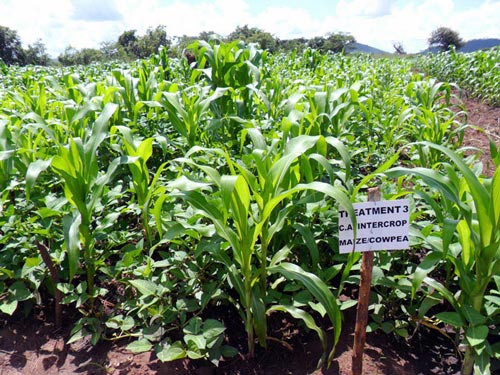 To reduce farm labor, improve soil productivity and crop yields, and contribute towards food security of farming households in the changing climate environment, CIMMYT, the
To reduce farm labor, improve soil productivity and crop yields, and contribute towards food security of farming households in the changing climate environment, CIMMYT, the 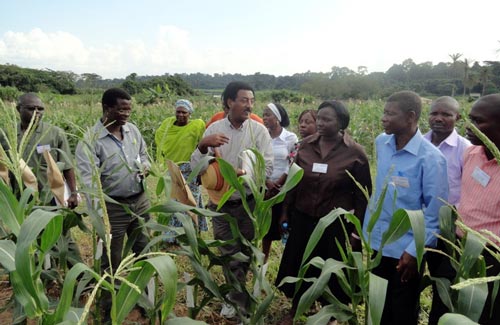 Having experienced CA, both Tembo and Zulu hope that more farmers will adopt the practice. “This project should continue so that others can learn from us that we do things differently now,” she added. Learning about CA has enabled Tembo to lessen the challenges her family faces, especially the tedious labor in preparing the field. Zulu is proud to see that other farmers admire what they see on his farm.
Having experienced CA, both Tembo and Zulu hope that more farmers will adopt the practice. “This project should continue so that others can learn from us that we do things differently now,” she added. Learning about CA has enabled Tembo to lessen the challenges her family faces, especially the tedious labor in preparing the field. Zulu is proud to see that other farmers admire what they see on his farm.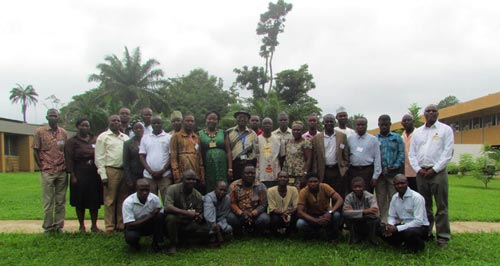
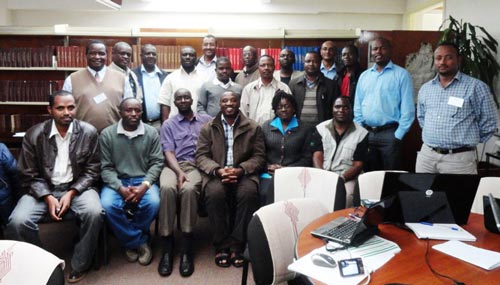 The fourth workshop on monitoring and evaluation (M&E) organized by the
The fourth workshop on monitoring and evaluation (M&E) organized by the 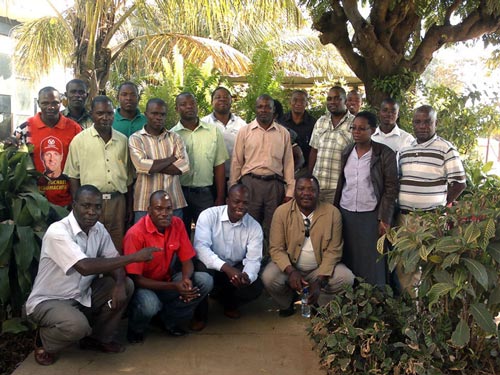 For the past three years the
For the past three years the  Maize plays a pivotal role in the livelihoods of people in southern Africa: its annual per capita consumption is around 85 kg. In the past season, however, farmers in Angola, Botswana, Lesotho, Swaziland, and much of Zimbabwe experienced a severe drought that significantly reduced their harvests.
Maize plays a pivotal role in the livelihoods of people in southern Africa: its annual per capita consumption is around 85 kg. In the past season, however, farmers in Angola, Botswana, Lesotho, Swaziland, and much of Zimbabwe experienced a severe drought that significantly reduced their harvests.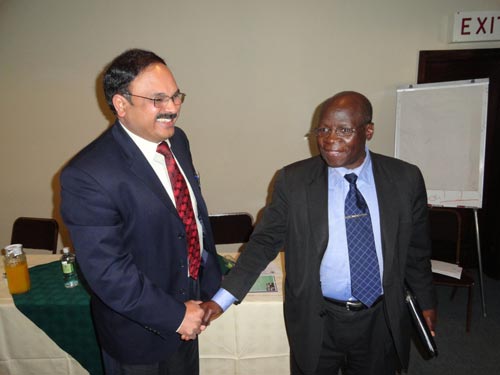 Participants discussed some of their notable achievements from 2011-12. Angola began its first commercial-scale production of the drought tolerant hybrid seed with Agropequária Kambondo and produced significant quantities of the drought tolerant openpollinated variety (OPV) ZM523. Farmers in the Democratic Republic of the Congo produced 80 tons of the drought tolerant OPV ZM623 through community-based seed schemes. Lesotho released a quality protein maize variety, and Zambia’s national program made significant progress in breeding for drought tolerance. Local emerging seed companies in Mozambique have begun production of one drought tolerant OPV and three drought tolerant hybrids.
Participants discussed some of their notable achievements from 2011-12. Angola began its first commercial-scale production of the drought tolerant hybrid seed with Agropequária Kambondo and produced significant quantities of the drought tolerant openpollinated variety (OPV) ZM523. Farmers in the Democratic Republic of the Congo produced 80 tons of the drought tolerant OPV ZM623 through community-based seed schemes. Lesotho released a quality protein maize variety, and Zambia’s national program made significant progress in breeding for drought tolerance. Local emerging seed companies in Mozambique have begun production of one drought tolerant OPV and three drought tolerant hybrids.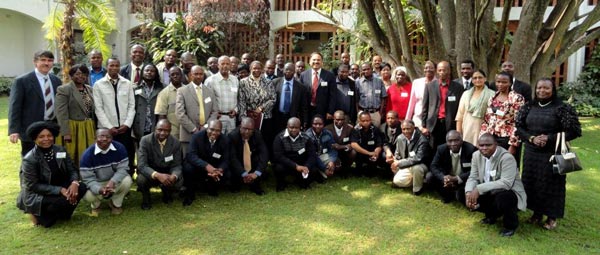
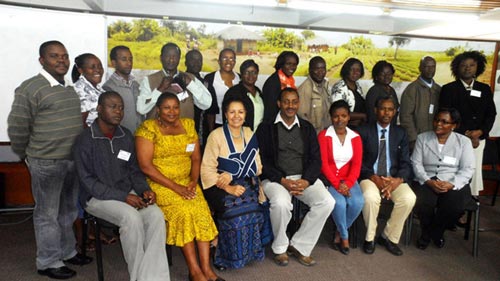
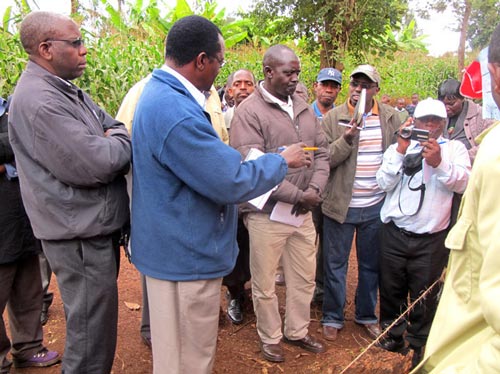 A delegation of scientists from South Sudan, Rwanda, and Uganda —the spillover countries of the Sustainable Intensification of Maize-Legume Systems for Food Security in Eastern and Southern Africa (SIMLESA) initiative— visited Embu, Kenya, during 18-20 July 2012, to gain hands-on experience in implementing the program and to learn about its impact on livelihoods of smallholder farmers.
A delegation of scientists from South Sudan, Rwanda, and Uganda —the spillover countries of the Sustainable Intensification of Maize-Legume Systems for Food Security in Eastern and Southern Africa (SIMLESA) initiative— visited Embu, Kenya, during 18-20 July 2012, to gain hands-on experience in implementing the program and to learn about its impact on livelihoods of smallholder farmers.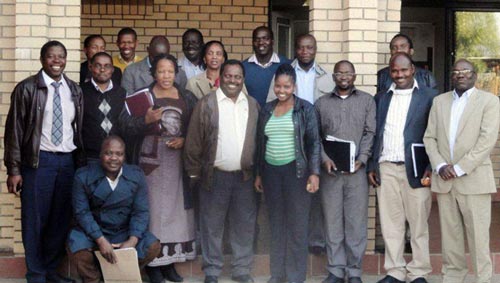
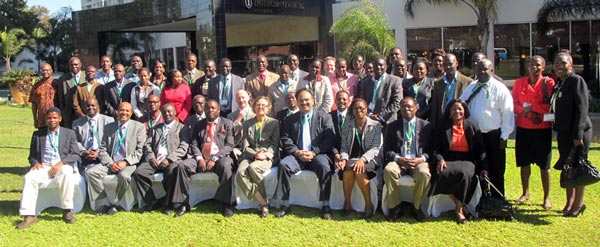
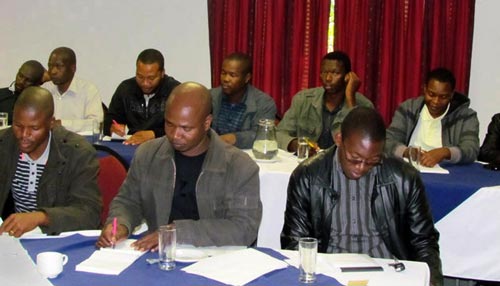 During 25 – 30 June 2012, CRP MAIZE and FAO-Swaziland supported the participation of 32 maize researchers and technicians in a maize training course in Mbabane, Swaziland. The course attracted agricultural researchers and extension staff from the Department of Agricultural Research and Special Services (DARSS), NGOs, and seed companies.
During 25 – 30 June 2012, CRP MAIZE and FAO-Swaziland supported the participation of 32 maize researchers and technicians in a maize training course in Mbabane, Swaziland. The course attracted agricultural researchers and extension staff from the Department of Agricultural Research and Special Services (DARSS), NGOs, and seed companies. 